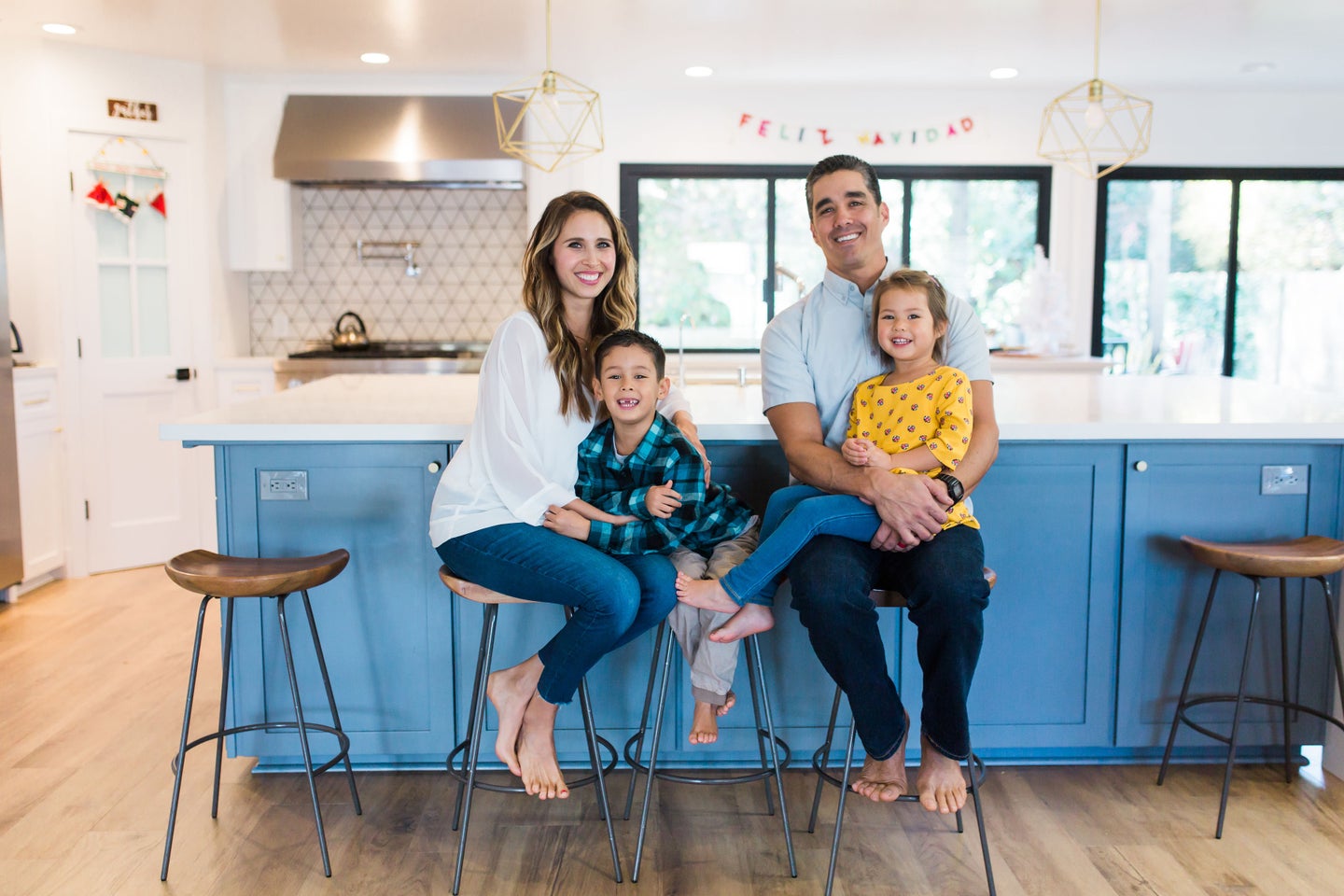How We Paid Off $266K in Debt in 3 Years to Afford Our Fixer-Upper
Eight secrets from a money-savvy homeowner.
Updated Sep 11, 2019 2:27 PM
We may earn revenue from the products available on this page and participate in affiliate programs.
Five years ago, Lauren Mochizuki and her husband made a bold decision: They were going to make their dream home a reality. The only thing standing in their way? Nearly $266,000 in debt. Their mortgage balance alone was $233,346, and on top of that, they had made some newlywed money mistakes like purchasing brand-new cars, which depreciate in value 20 percent in the first year.
Over the course of 33 months, the couple would (literally) work to see their way out of it—Mochizuki picked up a second job as an ER nurse and worked multiple 16-hour shifts a week, and her husband pulled double time at his job as a firefighter. After three years of saving, they paid off their condo, sold it, and put the proceeds toward purchasing and renovating their dream fixer-upper.
“We told ourselves that we wouldn’t go into debt to afford our renovation, which is why we lived in it for three years,” says Mochizuki. The pair started with a list of all the things they wanted to get done, in order of importance, and took note of the must-haves that would cost more, the places where they could save, and the projects they could DIY. Here, Mochizuki shares a few words of advice for aspiring homeowners.
Start With an Actionable Plan
Step one: The down payment. Mochizuki suggests aiming for at least 20 percent. This results in lower up-front fees, lower ongoing fees, more equity in your home off the bat, and a lower monthly payment.
Get to Know Your Spending Habits
Start by writing down all the different budget categories you can think of (utilities, housing, savings, kids, car maintenance, etc.). Then gather receipts to see how much you’ve been spending in these areas. “It’s powerful to see it on paper,” says Mochizuki. In their case, the couple was surprised to learn they were spending a ton on dining out and utility costs. No matter what your weakness is, addressing your past habits will help you determine how to cut down costs. “It’s not how much money you make, it’s how much you keep,” she adds.
Schedule a Monthly Check-In
With transparency and accountability top of mind, Mochizuki and her husband would sit down at the end of every month for a budget meeting. “He’s the president and I’m the vice president,” she says, laughing. “We tell every dollar what we want it to do for the following month.”
Be Prepared to Work for It
When Mochizuki and her husband first sat down with their debt, they had a mortgage balance of $233,346, a balance of $7,264 for her car, $23,946 for his car, and a credit card bill of $1,871. The two picked up side hustles, worked overtime, and hosted garage sales to free up their finances.“The biggest challenge during the 33 months was learning to be grateful for what I had,” recalls Mochizuki. During this time, they lived off 30 percent of their income. Their time was limited, but it brought them closer together. “I went from dining out to making meals at home, and from being on my phone while I was with my husband to being present in the moment.”
Pick Luxe-Looking Alternatives Over the Real Deal
Instead of compromising on their big wish-list items, the couple opted for materials that only looked luxe—like porcelain tile that runs throughout the downstairs. “Many people think it’s real wood when they first come in, and since we have young children, I didn’t want to worry about messes. It’s a total budget win,” says Mochizuki.
Splurge According to Function
The biggest items the pair splurged on were the oven and the accordion windows and doors—additions that make a difference in their day-to-day, especially in the summer when they’re spending time outside and hosting parties. Now that the family hardly dines out, having a spacious 48-inch Sub-Zero refrigerator that could meet all their leftover needs (and keep produce fresh) was crucial. “Strawberries can last at least a week in the fridge without mold. The amount of food going to waste has gone down considerably,” she says.
DIY Your Way to Deep Pockets
Mochizuki’s husband did everything he could to save money on construction costs, which included demolishing their ’70s-style fireplace mantel, installing recessed lighting in the living room, building the subfloor upstairs, and adding shelving to the master closet. They estimate it saved them around $30,000 in labor expenses. That’s not to say their DIY journey wasn’t without its setbacks and surprises (several hours after kicking off demo day, Mochizuki’s husband was rushed to the ER with appendicitis). “This happened three days before we needed to pack up the rest of our home,” recalls Mochizuki. “Talk about a crazy weekend.”
Think of Money in Terms of Hours Worked
Smart money decisions now come easily for Mochizuki. A trip to the grocery store is preceded by a meal-prep plan and a set shopping list. For bigger purchases that are $50 or more, she will sleep on it. “Now when I go shopping, I think, How many hours do I need to work to afford that? That will usually tell me if it’s worth it or not,” she shares. She also realized that she doesn’t need as much stuff: “As cheesy as it sounds, the best things in life are free: catching up with friends, spending time with family, exercising outside…all these things don’t cost anything and they mean the most.”
This story was originally published on February 12, 2019. It has been updated.
See more budgeting stories: Money Secrets of Designers Who (Rarely) Go Over Budget Where Interior Designers Shop for Affordable Decor The Best Budget-Friendly Design Blogs to Follow ASAP




